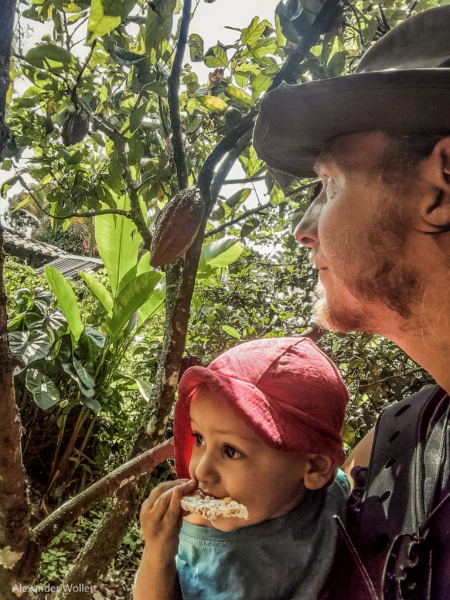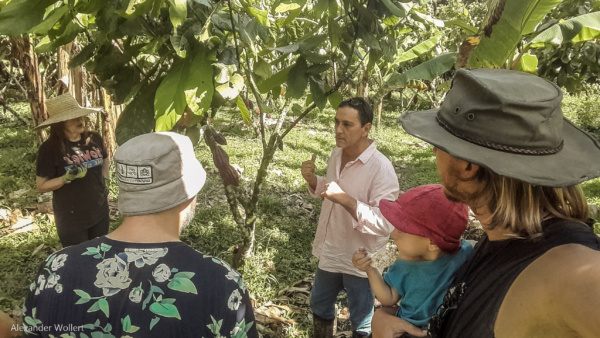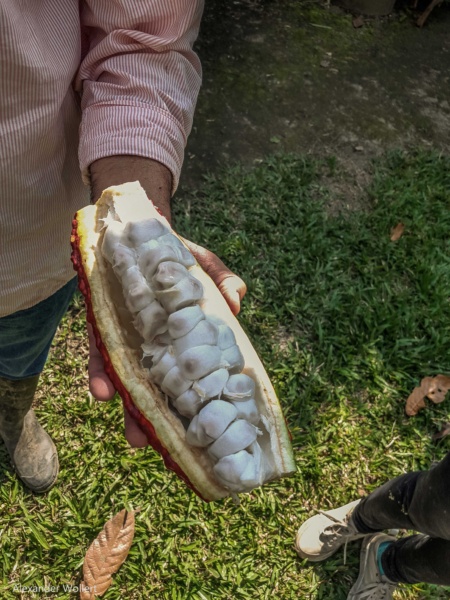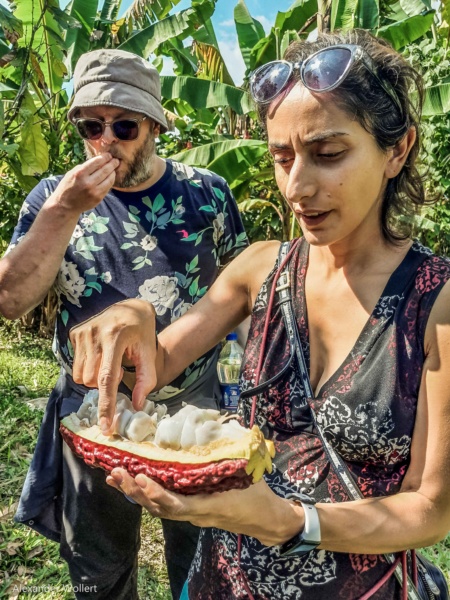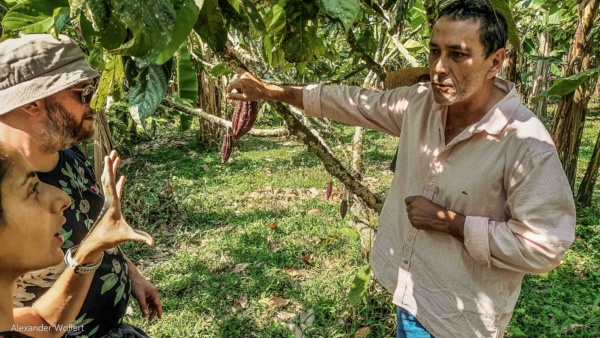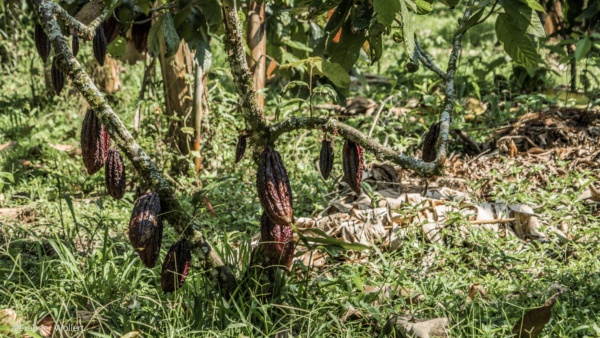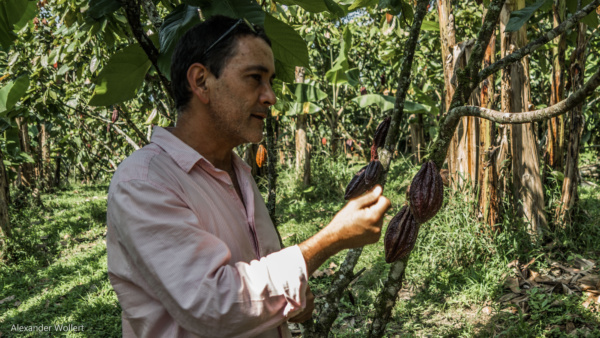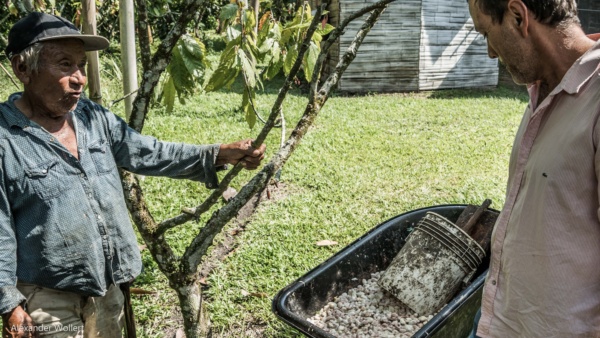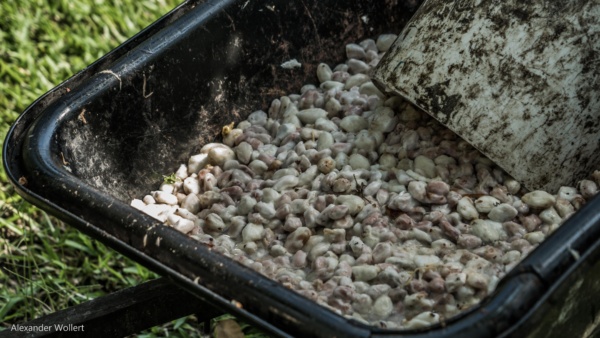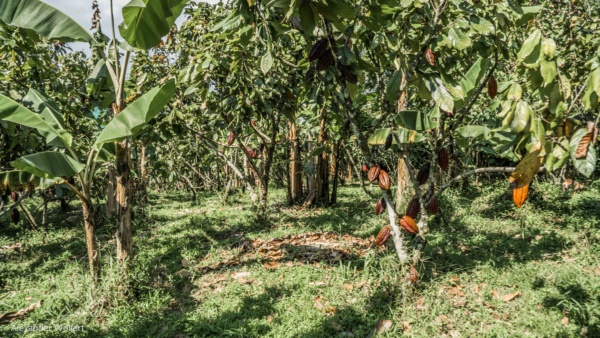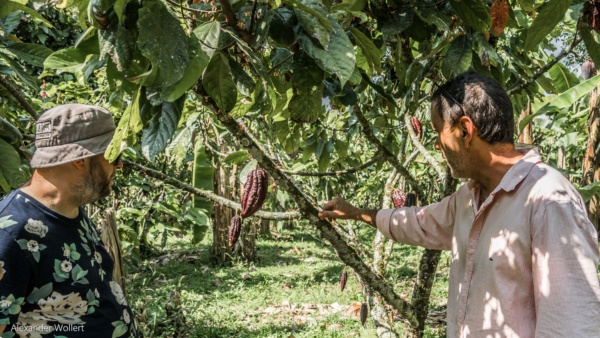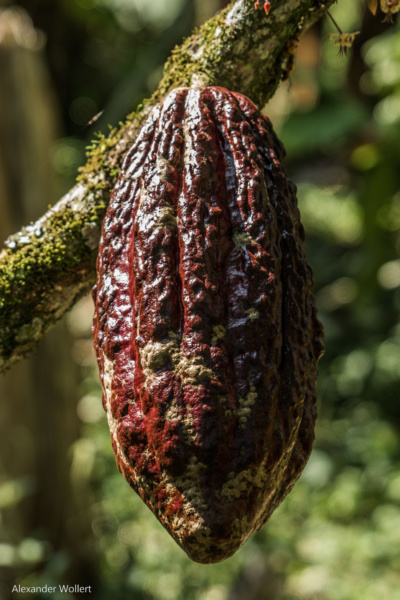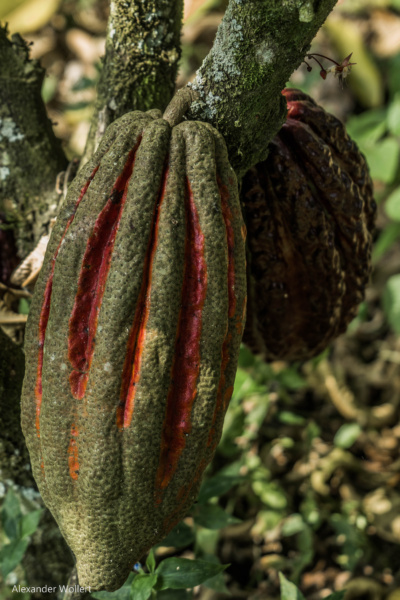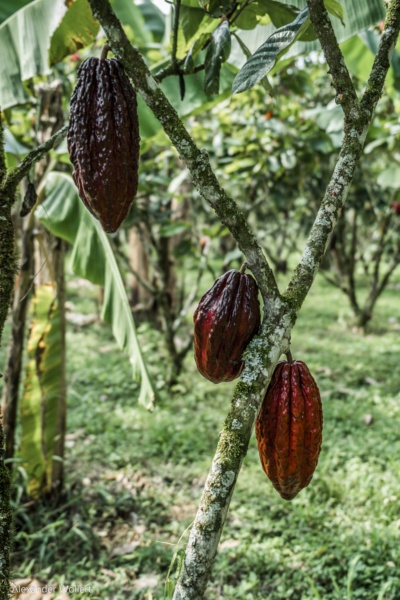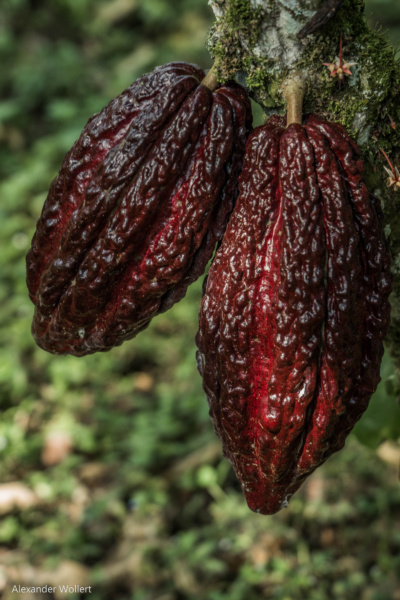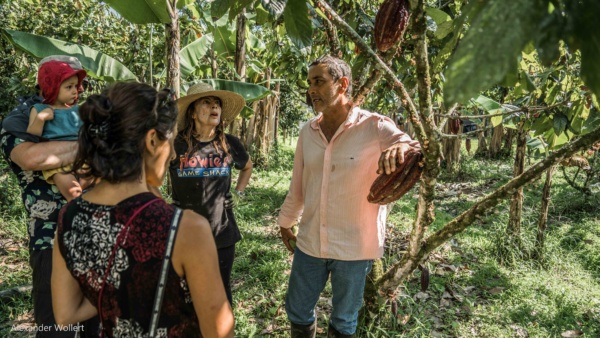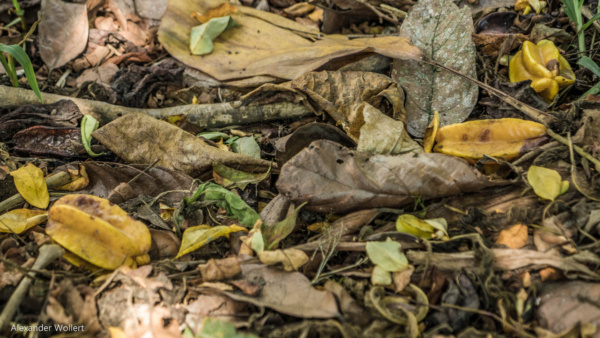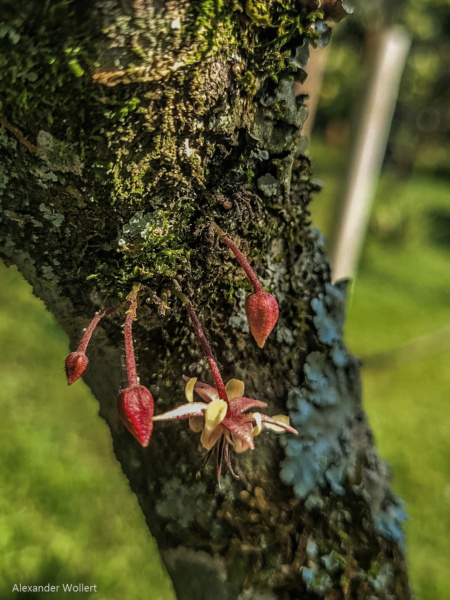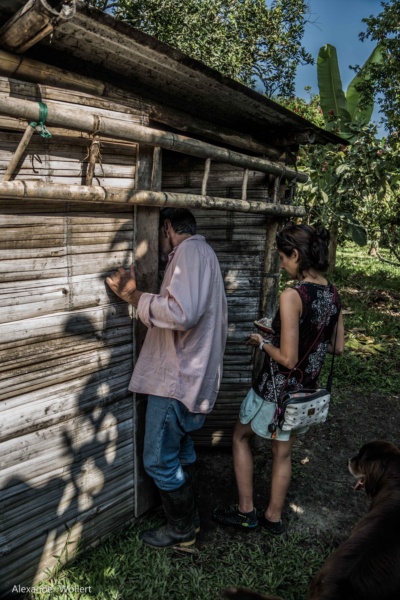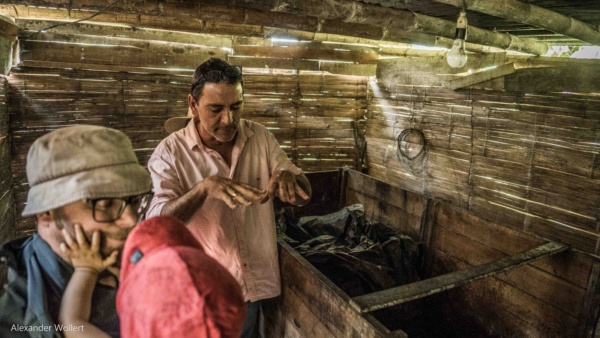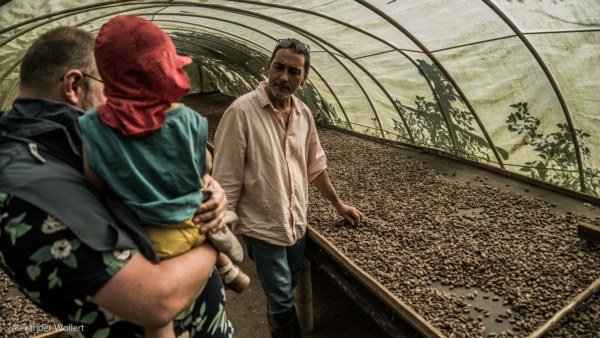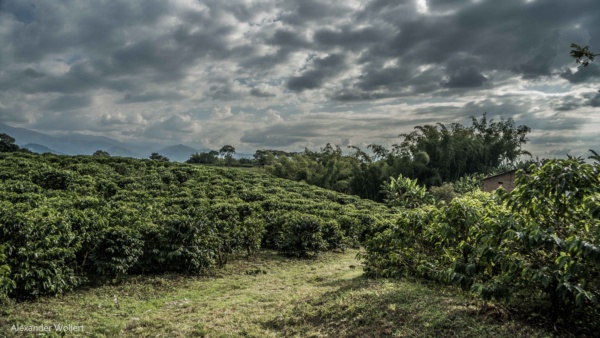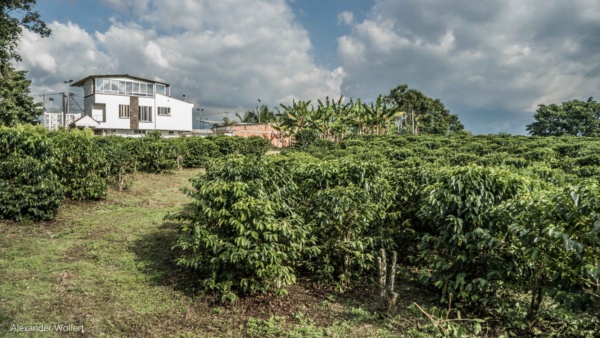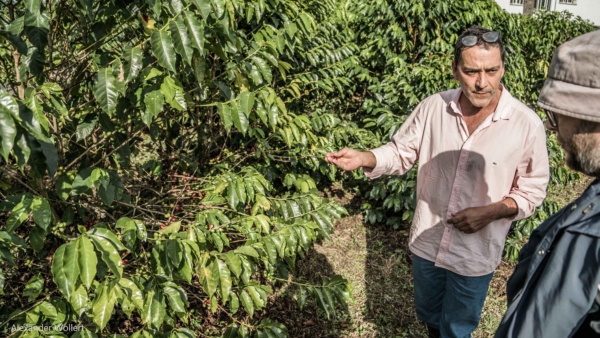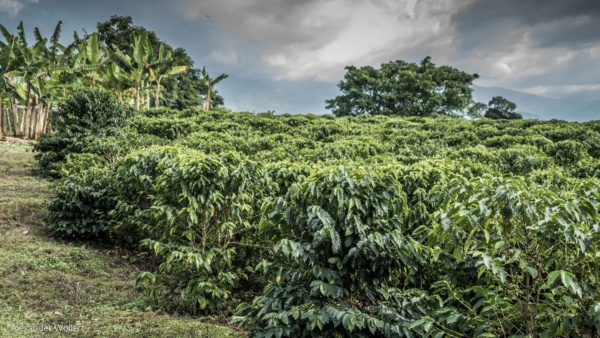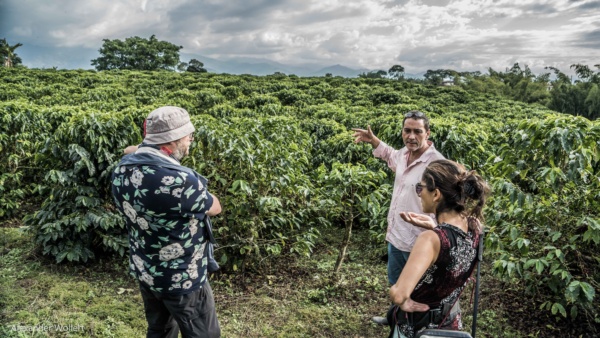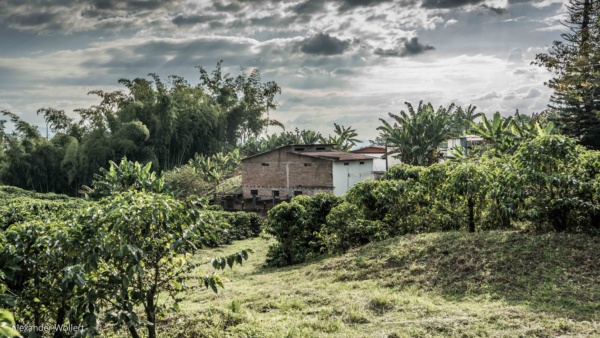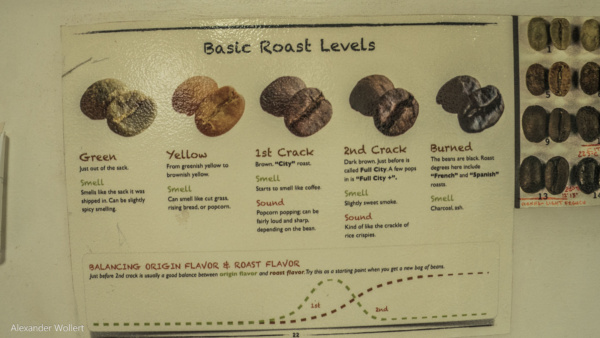Diary Entry
Over the pass of Alto de la Línea we finally reach Armenia with a few obstacles. We were referred to Angela and Jorge by travelers we met along the way. The couple has a beautiful finca outside the city surrounded by fruit, cocoa and coffee plantations. We announced ourselves via Whatsapp and luckily Jorge found us on the way, as we had already lost our way on the narrow slopes between the farms. Without his help we would not have found his house so easily.
The two are very nice hosts and we feel at home. However, we prefer to stay in our car for the sake of convenience because of Leon, which is not a problem. Uwe also places his tent in front of the house entrance. Angela and Jorge are used to overland travelers and have recently opened an AirBnB.
Leon also gets his money’s worth. The two have four dogs that our little one can romp around with at will.

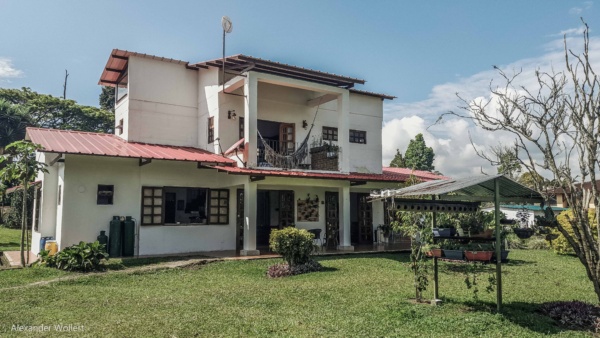
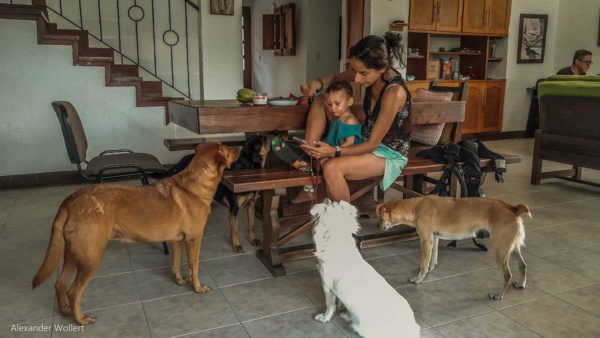
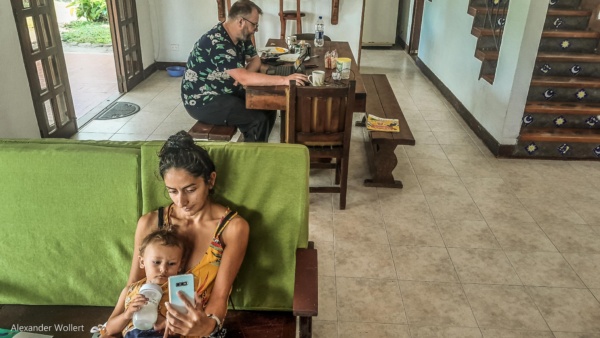
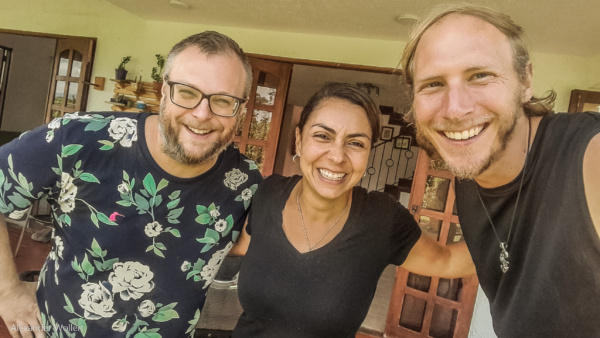
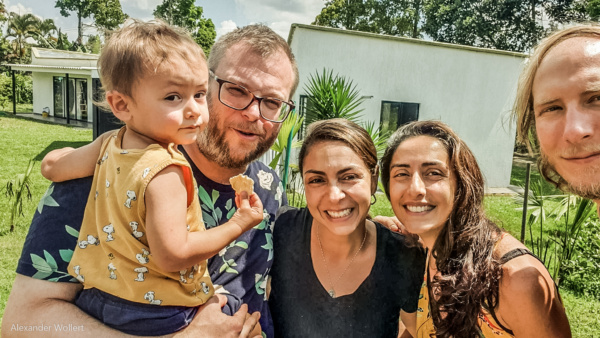

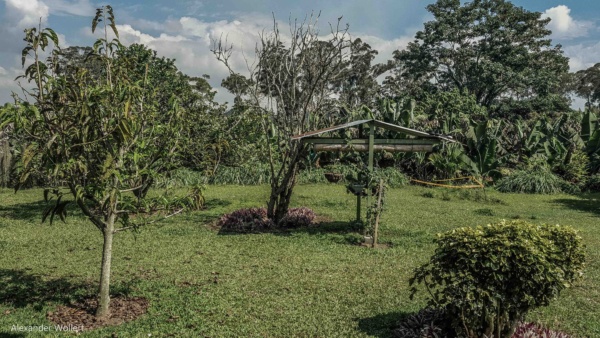
We would like to know more about the coffee and cocoa that is grown here. Angela introduces us to her brother Francisco, who owns a coffee roasting plant and has contacts to coffee and cocoa farmers.
Together with Francisco we first visit Judith, his brother’s ex-wife. Together with her mother and sister, she runs a large plantation with plantains, papayas, bananas, star fruit and two thousand cocoa trees.
Their head has just arrived with a wheelbarrow full of white cocoa beans that he has peeled from the fruit. Pastor is 83 years old and loves his job, which he has been doing on the farm near the small town of Pueblo Tapao for forty years.
Pastor cuts off some fresh cocoa pods for us with his thick machete. The fruits grow directly on the bark and are dark red. They look like they were made artificially. He opens the bowl and we can taste it. The beans are in a white pulp that tastes very sweet. It’s delicious and only vaguely – and if you think about it – reminiscent of chocolate.
The cocoa is harvested and the beans with the baggy pulp are fermented in a dark shed for eight days. Then they are dried in a greenhouse. The dry beans can be removed from their pods. These taste a lot like dark chocolate. Nevertheless, they are still roasted before they are finally processed into chocolate. We learned a lot.
We also visit a coffee plantation owned by one of Francisco’s cousins. We see the small bushes, which unfortunately are not ready for harvest at this time. But a few berries are already red and we can taste them. They taste very fruity, sweet and also delicious. There are two beans in the berry and you don’t have the feeling of having coffee in your mouth yet. These fresh coffee berries are a delicious snack between meals.
Francisco then takes us to his home. He has a small roastery there and explains to us how the roasting process works. By how long you roast the beans, you can determine their intensity. But the location of the plants also plays a role in the taste of the coffee.
The acidity increases with the altitude of the growing area. These plantations are located lower than most others. There are many more coffee plantations in the mountains near Salento.
There is a harvest twice a year, but there is still time. We’re not there at the right time of year. Of course we buy kilos of coffee from Francisco and spend a little more time on Angela and Jorge’s wonderful finca. Then we can continue again. Many people around Armenia have spoken of the place Salento. It’s said to be very nice there and on the way north it’s on the way.


